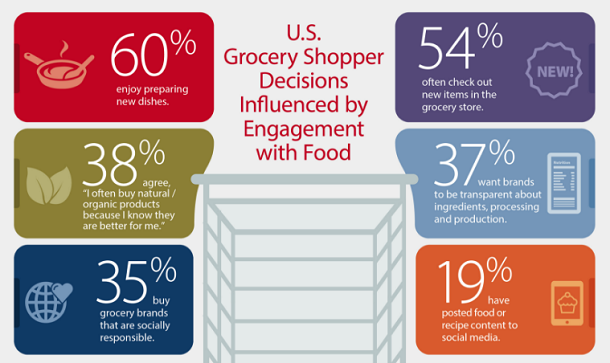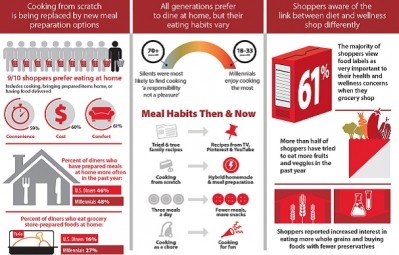Show consumers 'behind the scenes' as food evolves to reflect identity

The full service sales and marketing agency’s most recent edition of The Why? Behind The Buy found consumers increasingly are using food as a way to make a statement about themselves – similar to how they use clothing, music and hair styles.
The agency pointed to research it conducted that found 26% of all US consumers want to take cooking classes to learn more how to prepare new dishes. This figure jumps to 45% when only Millennial shoppers are considered, the report notes.
In addition, 60% of consumers now say they enjoy preparing new dishes, 56% say they enjoy planning meals and 54% say they enjoy shopping for the ingredients for those meals, according to Acosta.
One reason some of these respondents may find grocery shopping more enjoyable is that some view it as a social outing. Three-quarters of Millennials shop with others as do 80% of parents, Acosta said.
Social media magnifies cooking experience
Many consumers are taking their grocery shopping and meal prep to the next level and incorporating it publicly into their identities by posting about their food selections on social media.
For example, 25% of shoppers with children posted food or recipes on social media and 18% with children have posted about grocery shopping and new product information, Acosta says.
Taking a step back to look at the overall population, 53% of consumers told Acosta that they get recipes online – proof that the sharing food related content as an extension of identify is a two-way line of communication.
Another indication that meal prep has transitioned beyond chore to a statement of identity is the rise of lifestyle diets, Acosta notes. Specifically, it points to the growing number of consumers who eat non- or low-meat diets – roughly 11% of all shoppers and 19% of Millennials.
Brands must reflect well on shoppers
As identity becomes more closely aligned with food, consumers want to ensure the brands they buy reflect well on them as people.
Acosta found 35% of all US shoppers and 47% of Millennials buy grocery brands that are socially responsible, 30% of US shoppers buy brands that support charities and 27% buy brands that are authentic to their heritage.
Action items for brands, retailers
To capitalize on these changes, Acosta recommends stores and brands offer more recipes and pre-populated grocery lists – complete with corresponding aisle information if possible.
It also recommends companies continue to give consumers a “behind the scenes look” into what they stand for so that consumers can more deeply develop personal loyalty to specific products and brands.










